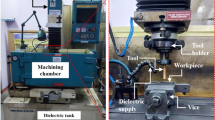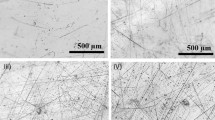Abstract
Nanoparticles are thought to induce more severe health impacts than larger particles. The nanoparticles from coal-fired boilers are classified into three size fractions with a 13-stage low pressure impactor. Their physicochemical properties are characterized by the high-resolution field emission scanning electron microscope and X-ray fluorescence spectrometer (XRF). The results show that coal-derived nanoparticles mainly consist of individual primary particles of 20–150 nm and their aggregates. Inorganic nanoparticles primarily contain ash-forming elements and their aggregates have a dense structure. Organic nanoparticles are dominated by the element carbon and their aggregates have a loose structure. Nanoparticles from the same boiler have a similar composition and are primarily composed of sulfur, refractory elements and alkali/alkaline elements. Some transition and heavy metals are also detected. For different boilers, greater differences are observed in the production of the nanoparticles and their composition, possibly due to the use of low-NO x burners. Coal-derived nanoparticles have a small size, large specific surface area and complicated chemical composition, and thus are potentially more harmful to human health.
Similar content being viewed by others
References
Biswas P, Chang Y W. Nanoparticles and the environment. J Air Wast Man, 2005, 55(6): 708–746
Hirano S, Nitta H, Moriguchi Y, et al. Nanoparticles in emissions and atmospheric environment: now and future. J Nanopart Res, 2003, 5(3): 311–321
Oberdörster G, Stone V, Donaldson K. Toxicology of nanoparticles: a historical perspective. Nanotoxicology, 2007, 1(1): 2–25
Donaldson K, Tran C L, Jimenez L A, et al. Combustion-derived nanoparticles: a review of their toxicology following inhalation exposure. Part Fibre Toxicol, 2005, 2: 10
Inoue K-I, Takano H, Yanagisawa R, et al. Effects of inhaled nanoparticles on acute lung injury induced by lipopolysaccharide in mice. Toxicol, 2007, 238(2–3): 99–110
Oberdörster G, Oberdorster E, Oberdorster J. Nanotoxicology: an emerging discipline evolving from studies of ultrafine particles. Env iron Health Perspect. 2005, 113: 823–839
Chen L C, Lam H F, Kim E J, et al. Pulmonary effects of ultrafine coal fly ash inhaled by guinea pigs. J Toxicol Environ Health, 1990, 29: 169–184
Chen Y, Shah N, Huggins F E, et al. Transmission electron microscopy investigation of ultrafine coal fly ash particles. Environ Sci Technol, 2005, 39: 1144–1151
Chen Y, Shah N, Huggins F E, et al. Characterization of ultrafine coal fly ash particles by energy-filtered TEM. J Microsc, 2005, 217(3): 225–234
Linak W P, Yoo J I, Wasson S J, et al. Ultrafine ash aerosols from coal combustion: characterization and health effects. P Combust Inst, 2007, 31: 1929–1937
Chang M C O, Chow J C, Watson J G, et al. Measurement of ultrafine particle size distributions from coal-, oil-, and gas-fired stationary combustion sources. J Air Waste Manage, 2004, 54(12): 1494–1505
Yu D, Xu M, Yao H, et al. Effective identification of the three particle modes generated during pulverized coal combustion. Chin Sci Bull, 2008, 53(10): 1593–1602
Lighty J S, Veranth J M, Sarofim A F. Combustion aerosols: factors governing their size and composition and implications to human health. J Air Waste Manage, 2000, 50(9): 1565–1618
Quann R J, Sarofim A F. Vaporization of refractory oxides during pulverized coal combustion. P Combust Inst, 1982, 19(1): 1429–1440
Flagan R C, Taylor D D. Laboratory studies of submicron particles from coal combustion. P Combust Inst, 1981, 18(1): 1227–1237
Neville M, Quann R J, Haynes B S, et al. Vaporization and condensation of mineral matter during pulverized coal combustion. P Combust Inst, 1981, 18(1): 1267–1274
Helble J J, Sarofim A F. Factors determining the primary particle size of flame-generated inorganic aerosols. J Colloid Interface Sci, 1989, 128(2): 348–362
Helble J, Neville M, Sarofim A F. Aggregate formation from vaporized ash during pulverized coal combustion. Prog Energ Combust, 1988, 21(1): 411–417
Veranth J M, Fletcher T H, Pershing D W, et al. Measurement of soot and char in pulverized coal fly ash. Fuel, 2000, 79(9): 1067–1075
Kennedy I M. Models of soot formation and oxidation. Prog Energ Combust, 1997, 23(2): 95–132
Tree D R, Svensson K I. Soot processes in compression ignition engines. Prog Energ Combust, 2007, 33(3): 272–309
Kauppinen E I, Pakkanen T A. Coal combustion aerosols: a field study. Environ Sci Technol, 1990, 24(12): 1811–1818
Zhang L, Ninomiya Y, Yamashita T. Formation of submicron particulate matter (PM1) during coal combustion and influence of reaction temperature. Fuel, 2006, 85(10–11): 1446–1457
Lee C M, Davis K A, Heap M P, et al. Modeling the vaporization of ash constituents in a coal-fired boiler. P Combust Inst, 2000, 28(2): 2375–2382
Senior C L, Flagan R C. Synthetic chars for the study of ash vaporization. P Combust Inst, 1985, 20(1): 921–929
Taylor D D, Flagan R C. Influence of combustor operation on fine particles from coal combustion. Aerosol Sci Tech, 1982, 1(1): 103–117
McElroy M W, Carr R C, Ensor D S, et al. Size distribution of fine particles from coal combustion. Science, 1982, 215(4528): 13–19
BéruBé K, Balharry D, Sexton K, et al. Combustion-derived nanoparticles: mechanisms of pulmonary toxicity. Clin Exp Pharmacol Physiol, 2007, 34(10): 1044–1050
Wilson M R, Lightbody J H, Donaldson K, et al. Interactions between ultrafine particles and transition metals in vivo and in vitro. Toxicol Appl Pharmacol, 2002, 184(3): 172–179
Li N, Sioutas C, Cho A, et al. Ultrafine particulate pollutants induce oxidative stress and mitochondrial damage. Environ Health Perspect, 2003, 111: 455–460
Prahalad A K, Inmon J, Dailey L A, et al. Air pollution particles mediated oxidative DNA base damage in a cell free system and in human airway epithelial cells in relation to particulate metal content and bioreactivity. Chem Res Toxicol, 2001, 14(7): 879–887
Risom L, Miller P, Loft S. Oxidative stress-induced DNA damage by particulate air pollution. Mutat Res, 2005, 592(1–2): 119–137
Pope C A, Dockery D W. Epidemiology of particle effects. In: Holgate S T, Samet J M, Koren H S, Maynard R L eds. Air Pollution and Health. London: Academic Press, 1999. 673–705
Komarnisky L A, Christopherson R J, Basu T K. Sulfur: its clinical and toxicologic aspects. Nutrition, 2003, 19(1): 54–61
Amdur M O. Health effects of air pollutants: sulfuric acid, the old and the new. Environ Health Perspect, 1989, 81: 109–113
Amdur M O, Chen L C. Furnace-generated acid aerosols: speciation and pulmonary effects. Environ Health Perspect, 1989, 79: 147–150
Fernandez A, Wendt J O L, Witten M L. Health effects engineering of coal and biomass combustion particulates: influence of zinc, sulfur and process changes on potential lung injury from inhaled ash. Fuel, 2005, 84(10): 1320–1327
Aruoma O I. Free radicals, oxidative stress, and antioxidants in human health and disease. J Am Oil Chem Soc, 1998, 75(2): 199–212
Morawska L, Zhang J. Combustion sources of particles. 1. Health relevance and source signatures. Chemosphere, 2002, 49(9): 1045–1058
Barfknecht T R. Toxicology of soot. Prog Energ Combust, 1983, 9(3): 199–237
Su W H, Zhang Q P, Song W Z, et al. Problems of soot pollution and environmental effects in northern China. Aerosol Sci Tech, 1989, 10(2): 231–235
Zhou Y M, Zhong C Y, Kennedy I M, et al. Oxidative stress and NFkappaB activation in the lungs of rats: a synergistic interaction between soot and iron particles. Toxicol Appl Pharmacol, 2003, 190: 157–169
Author information
Authors and Affiliations
Corresponding authors
Additional information
Supported by National Natural Science Foundation of China (Grant Nos. 50721005, 50706013 and 50720145604)
About this article
Cite this article
Yu, D., Xu, M., Yao, H. et al. Physicochemical properties and potential health effects of nanoparticles from pulverized coal combustion. Chin. Sci. Bull. 54, 1243–1250 (2009). https://doi.org/10.1007/s11434-008-0582-0
Received:
Accepted:
Published:
Issue Date:
DOI: https://doi.org/10.1007/s11434-008-0582-0




